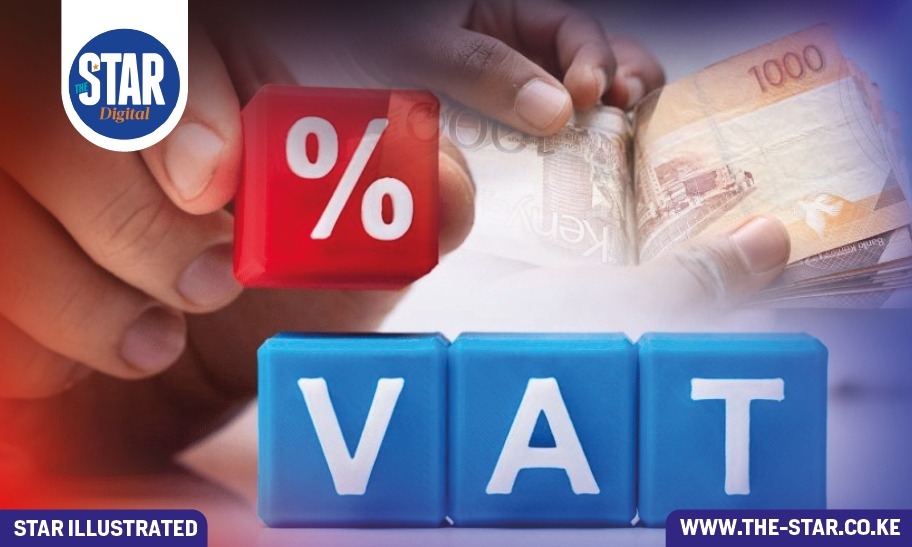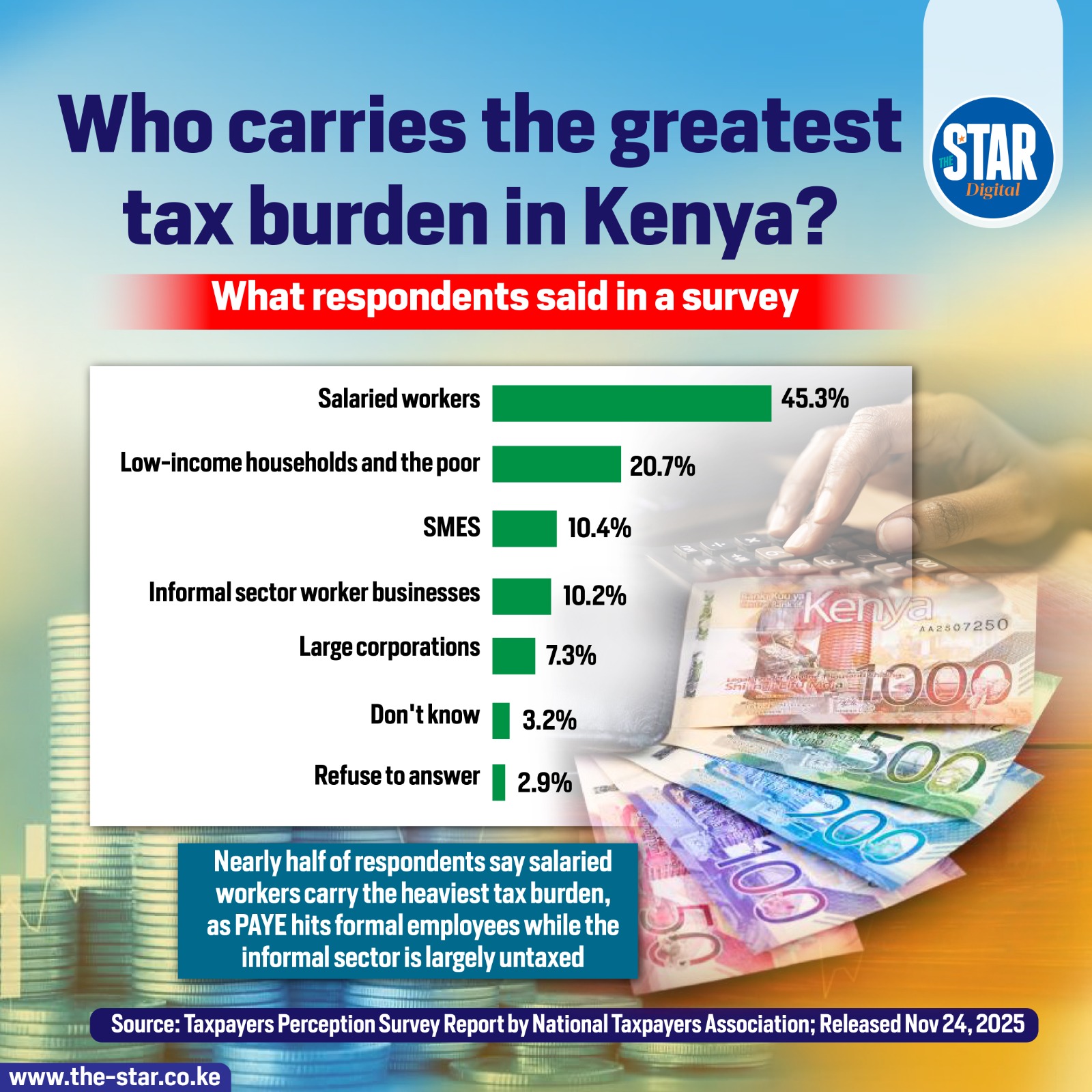
Which taxes are hitting your pocket most? What Kenyans said
Income Tax (PAYE) was cited by 12.3 per cent of respondents.
Low-income households and the poor were cited by 20.7% of respondents.
In Summary

Audio By Vocalize

Salaried workers are perceived to bear the greatest share of Kenya’s tax burden, with 45.3% of respondents identifying them as the most affected group.
This reflects the impact of Pay As You Earn (PAYE) deductions, which are automatically applied to formal employees, making their contributions more visible and consistent. In contrast, other sectors, particularly informal businesses, often operate outside the formal tax net.
Low-income households and the poor were cited by 20.7% of respondents, suggesting that indirect taxes and consumption-based levies may disproportionately affect those with limited earnings.
Small and medium-sized enterprises (SMEs) followed at 10.4%, while informal sector workers and businesses were close behind at 10.2%. These groups may face challenges such as compliance costs, unpredictable enforcement, or informal levies, though their overall tax contributions are perceived as lower than those of salaried employees.
Large corporations were mentioned by 7.3% of respondents, indicating a belief that big businesses may not carry as heavy a tax load relative to their scale. A small percentage of respondents—3.2%—said they did not know who bears the greatest burden, while 2.9% declined to answer.
The survey was conducted by the National Taxpayers Association and released in November 2025. It offers insight into public perceptions of fairness and transparency in Kenya’s tax system, highlighting the visibility of formal taxation and the complexities of informal and corporate contributions.

Income Tax (PAYE) was cited by 12.3 per cent of respondents.